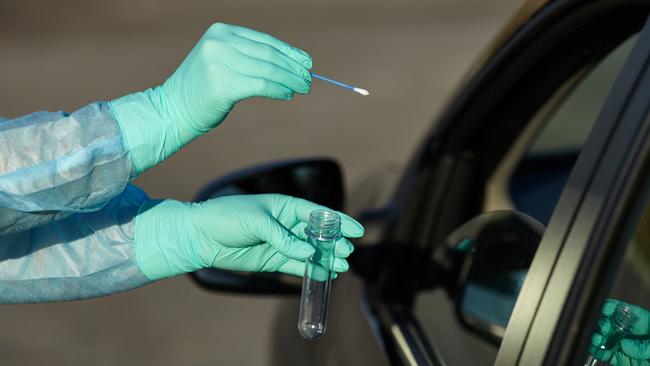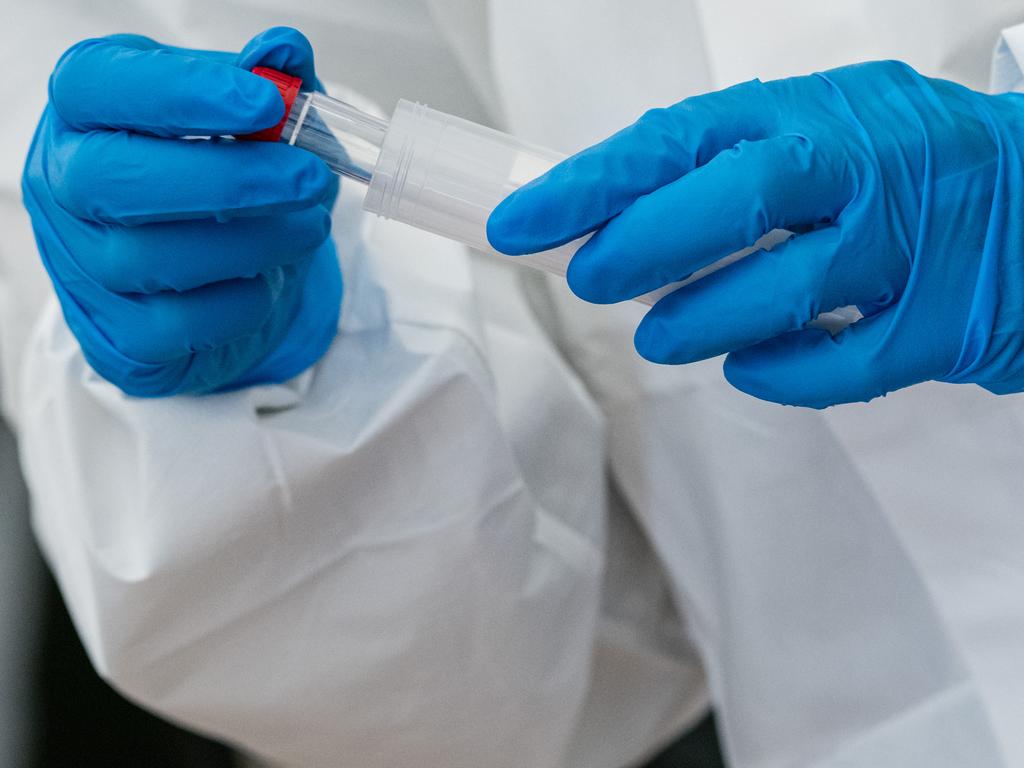Coronavirus: Painless oral swab test for high-risk workers
The eye-watering nasal swab is still the gold standard, but a much less invasive, quicker COVID-19 spit test is in development.

Painless saliva swab tests for COVID-19 will soon be used at high-risk workplaces such as abattoirs and healthcare facilities to hunt down asymptomatic sufferers of the disease — but for now, most of us will have to put up with the unpleasant process of sticking things up our nose.
While the nasal swab is often uncomfortable, it is at the heart of Australia’s highly successful testing program, and scientists say it will remain the gold standard as the range of testing options gradually increases.
Deborah Williamson, a clinical microbiologist at Melbourne’s Peter Doherty Institute for Infection and Immunity, said the development of different testing methods — such as testing saliva or rapid point-of-care tests — was “fundamental in preventing the spread of this disease”.
“The polymerase chain reaction test, commonly known as the nose swab, has been the workhorse of our testing strategy so far, but the ability to have an expanded portfolio of tests is a really exciting development,” Professor Williamson said.
Earlier this week, the World Health Organisation approved a suite of new rapid antigen tests that can deliver results in just 15 minutes. More than 100 million of the rapid antigen tests, which look like pregnancy tests that display two blue lines for a positive result, will be supplied initially to poorer countries.
However, while such detection devices have the benefit of giving an almost immediate result, they are generally considered to be less accurate than the PCR tests, which detect the viral nucleic acid.
A federal Health Department spokeswoman said the new rapid antigen tests were not included on the Australian Register of Therapeutic Goods and therefore could not currently be supplied here.
One development being tested in Australia is the saliva swab, with hundreds of Victoria Police officers and other employees involved in a trial through the Doherty Institute. The workplace saliva test pilot program, being undertaken at three police stations, has detected two asymptomatic cases among people who had no idea they had come into contact with the coronavirus.
Following the pilot study, it is expected that surveillance testing using saliva swabs will be rolled out in coming weeks at high-risk workplaces such as abattoirs, industrial food preparation facilities, healthcare facilities and transport and construction hubs.
With the proportion of asymptomatic cases of COVID-19 ranging from 15 to 30 per cent, surveillance tests such as saliva swabs and sewage examination are set to play a crucial role in detecting people who have unknowingly been exposed to the virus.
Antibody testing will also be used to pinpoint who has recovered. Researchers at Monash University have been able to detect COVID-19 antibodies in blood samples, with results in just 20 minutes. The study is ongoing, however, and the test has yet to be approved by the Therapeutic Goods Administration.







To join the conversation, please log in. Don't have an account? Register
Join the conversation, you are commenting as Logout